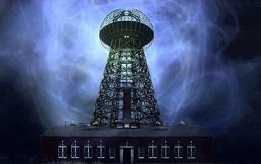Hi.
I did a quick test with the intention of replicating ZPM.
I think I am far from the result, but the increase in the light intensity of the 5w lamp caught my attention, while the current consumption decreases.
I use a Starch block cut from other experiments. I don't rely on the oscilloscope probe either because today I burned the input on channel B together with the probe. Therefore, I ask those who control ZPM to show me some tracks using ferrite. That's all I have available for now.
thanks
Realco's successful ZPM replication
- 1.7K Views
- Last Post 25 January 2023
- Topic Is Solved
- Liked by
-
-

-

-

- and 2 others
Hi everybody
If I still had small doubts about the resonance on the ferrite in this ZPM, it has now disappeared.
As I don't really have time, I resorted to a quick test with what I had from other projects. What you saw is a coil from the time when I was in Chris's forum with which I tried (and partially) managed to demonstrate the operation of Floyd Sweet with magnets. So we had 260 bifilar coils on each of the two coils. I removed 120-125 turns from one of them. and you see the result. The lamp draws very little current, as you can see in the clip, which means there is resonance at about 1,550-1,650 khz.
Good luck to those who will try the version with ferrite.
- Liked by
-

-
-

-

- and 1 others
Hi Realco,
So you took a failed old experiment of Chris' "partnered output coils".
Then you removed the third coil so only the two identical and opposite coils remained.
Then you removed about half of the turns from one of the coils so you made the coils asymmetric and with 1:2 turns ratio just like ZPM have.
And with the new ad-hoc ferrite ZPM you managed to show the input decreasing effect while the light bulb luminosity increased (effect clearly visible on the analog ampere meter when the device reached optimal/resonance frequency). 😃
So you managed to transform a failed "partnered output coils" experiment in a successful ferrite ZPM replication and, more than that, to power up a 220V light bulb ! I guess it's a standard domestic light bulb, can't see how many watts it has.
Which says a lot about the the capabilities and the potential of what we demonstrated and shared publicly here about ZPM and what's presented just as a hypothetical solution on the old aboveunity site ('cause nobody saw any demonstration of a working device using "partnered output coils" with a real load there). 😉
Thanks for sharing your new successful experiment !
Regards,
Fighter
| "If you want to find the secrets of the universe, think in terms of energy, frequency and vibration." | ||
| Nikola Tesla | ||
Quoting:Fighter
Hi Realco,
So you took a failed old experiment of Chris' "partnered output coils".
Then you removed the third coil so only the two identical and opposite coils remained.
Then you removed about half of the turns from one of the coils so you made the coils asymmetric and with 1:2 turns ratio just like ZPM have.
And with the new ad-hoc ferrite ZPM you managed to show the input decreasing effect while the light bulb luminosity increased (effect clearly visible on the analog ampere meter when the device reached optimal/resonance frequency). 😃
Not quite, not exactly! I was saying that I had for a long time... from the >chris era> a coil with which I replicated FLOYD SWEET.
I modified this coil and.... You saw the result.
As for the lamp, when she was (younger) she had about 60w from what I remember.
Anyway... The ZPM project has huge potential! It all depends on the setting
No one online at the moment


